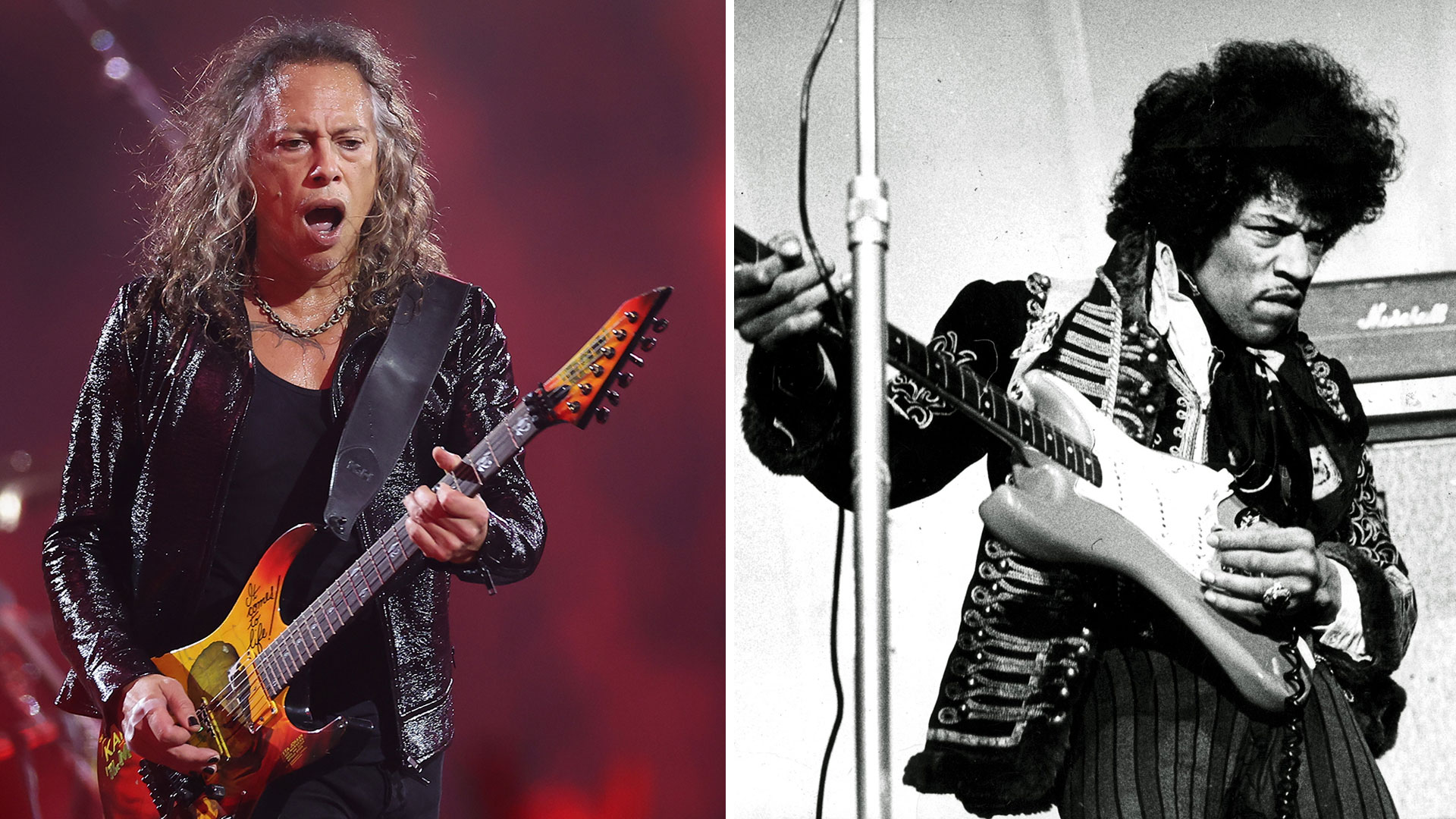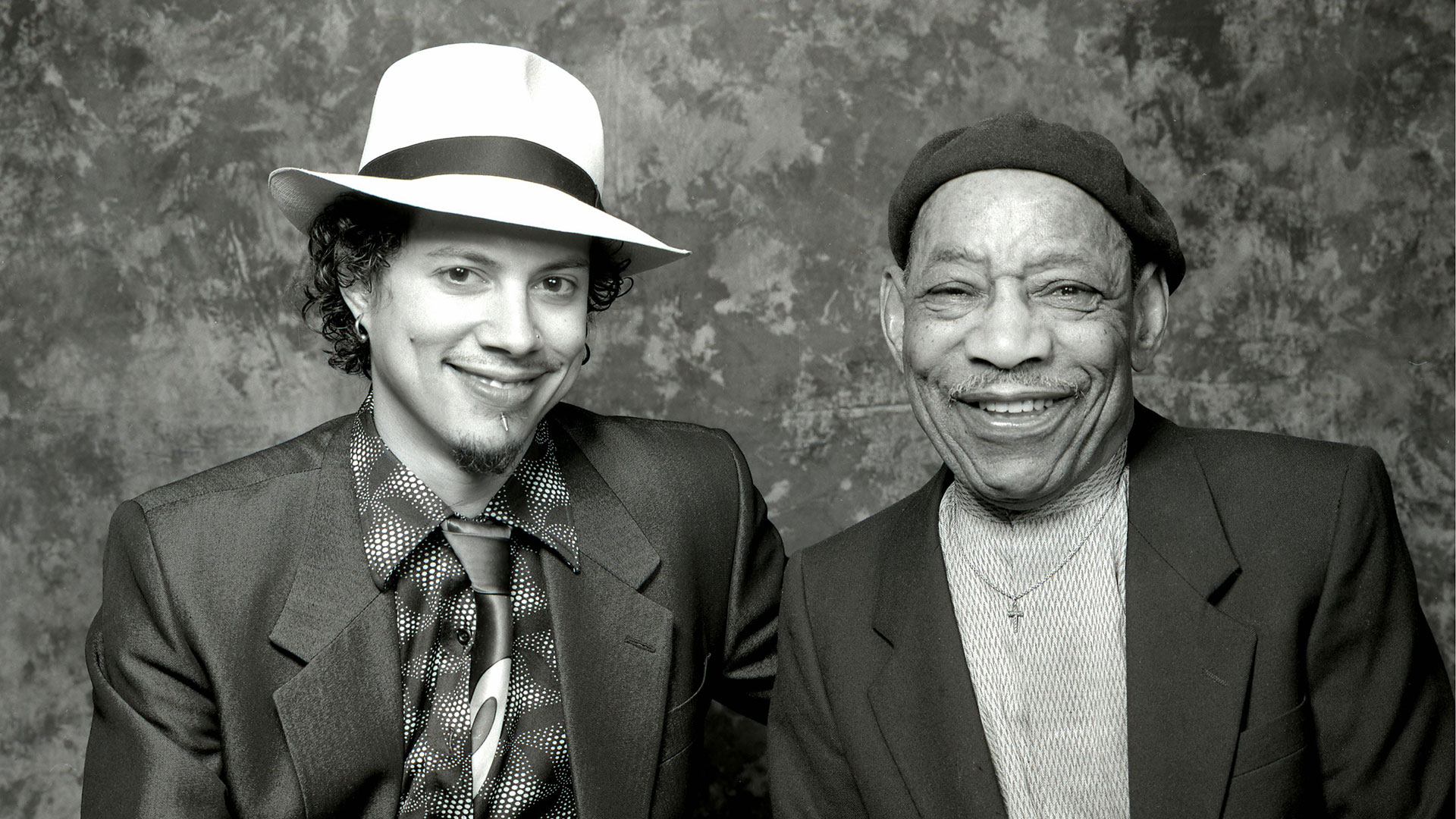“Big jets moving, bombers, people in battle, distress, crying – the Vietnam War added a lot of darkness to his playing”: Kirk Hammett on how Jimi Hendrix’s guitar style helped birth metal and psychedelia
The Metallica man and Hendrix fan argues that the guitar icon's influence on metal is under-appreciated

Kirk Hammett has made no secret of the influence that Jimi Hendrix has had on his playing. Over the years this influence has been overt, like when Kirk treated audiences on Metallica’s 1989 Damaged Justice Tour to some Little Wing during his solo spot.
Or that time he enraged hotel guests with a high-volume performance of Voodoo Chile (Slight Return) at 3.14am in one of the highlights from A Year And A Half In The Life Of Metallica Part 2. And then there’s the wah pedal connection, an effect that was inaugurated on record by Hendrix and adopted by the Metallica lead guitarist on his signature lead sound.
We asked Kirk what made Hendrix so different, so unique, a player who, all these years on, remains singular; the one that no one can touch. Kirk took a beat, and said it all had to be with the times Hendrix was living in.
Hendrix was enlisted in the military training at a time when war was looming in Vietnam. After his discharge in 1962, Hendrix was making music in a society that would be at odds with itself, roiling with peace protests and the civil rights movement, creating a cultural backdrop for a confrontational sound that was dark, psychedelic and powerful.
“I could be completely off the mark on this but I think the fact that he was in the army, and it was during the Vietnam War, and he was all geared up to go to Vietnam and fight,” says Hammett.
“He was in the [101st Airborne Division] and got out because he injured himself as a paratrooper. I think that the specter of war, the Vietnam War, and battle, was a huge influence on him, sonically. I think that he wanted to capture that huge militaristic sort of force of power in his guitar.
“With songs like Machine Gun and Star-Spangled Banner, it feels like it was kind of like a bit of an inspiration there. Big jets moving, bombers, people in battle, distress, crying; the Vietnam War just added a lot of darkness to his playing, and also I think the civil rights movement added a lot of darkness to his playing.”
Get The Pick Newsletter
All the latest guitar news, interviews, lessons, reviews, deals and more, direct to your inbox!
And, to Hammett’s mind, there was a visual quality to his playing, too. You heard Hendrix in Technicolor. This, allied to the power and physicality of his sound, created something altogether new.

“It’s interesting. When I think about Jimi, he really did start the heavy metal thread,” Kirk says.
“I believe he was very instrumental in what we now know as heavy metal. But he also created psychedelic music. He definitely created a heavier type of music than what was known at the time. And he pretty much single-handedly created psychedelic music, just by how he played guitar.
“There was nothing as visual as his guitar playing before him. Maybe The Yardbirds? With Jimmy Page? But the psychedelic stuff that Jimi Hendrix did was like motion color pictures, like movies. Are You Experienced?, the music is so visual, all these images. He created two types of music, just like that! Thank God for that.”
Jonathan Horsley has been writing about guitars since 2005, playing them since 1990, and regularly contributes to publications including Guitar World, MusicRadar and Total Guitar. He uses Jazz III nylon picks, 10s during the week, 9s at the weekend, and shamefully still struggles with rhythm figure one of Van Halen’s Panama.
“I didn’t use any amps. The pedal that saved me was the Boss Super Overdrive”: How Yves Jarvis made 2025’s most exciting experimental record so far with a $50 Explorer knockoff and an unbelievably weird tuning
“Chess was cussin' when I got to the session with Muddy. But when he heard me, he just sat there with his mouth open”: Leonard Chess wanted to cash in on the folk boom, and asked Muddy Waters to bring him an old acoustic bluesman. He brought him Buddy Guy



![[from left] George Harrison with his Gretsch Country Gentleman, Norman Harris of Norman's Rare Guitars holds a gold-top Les Paul, John Fogerty with his legendary 1969 Rickenbacker](https://cdn.mos.cms.futurecdn.net/TuH3nuhn9etqjdn5sy4ntW.jpg)







